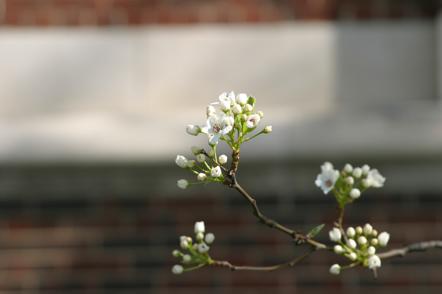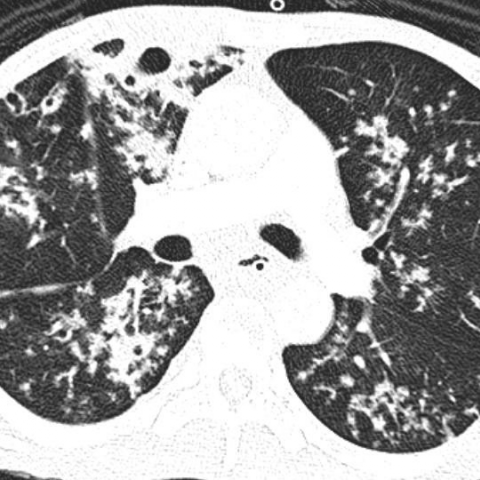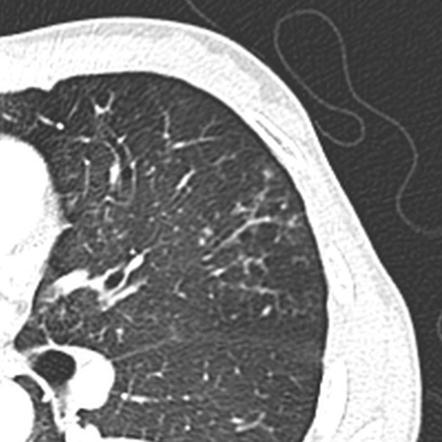tree in bud lesion
Endobronchial tuberculosis the tree-in-bud lesions consist of either endo-luminal caseum or mixture of intra- and peri-bronchiolar caseation inflammatory cells and debris fibrosis and granuloma formation. Earliest findings of endobronchial spread tuberculosis mostly from adjacent cavity is the formation of intrabronchiolar caseum.
View Of Tree In Bud The Southwest Respiratory And Critical Care Chronicles
Situations the tree-in-bud appearance can be a result of di- lated peripheral centrilobular artery filled with intravascular tumor emboli or thrombotic microangiopathy of tumors rep- resenting the hematogenous spread of pulmonary metasta- sis 6 7.

. The tree-in-bud-pattern of images on thin-section lung CT is defined by centrilobular branching structures that resemble a budding tree. Tuesday May 12 2020 chest radiology CXR. Slice thickness is 1 mm.
A vascular cause of tree-in-bud pattern on CT. 1 refers to a pattern seen on thin-section chest CT in which centrilobular bronchial dilatation and filling by mucus pus or fluid resembles a budding tree Fig. This finding is considered classical for endobronchial TB as in this case.
However vascular lesions involving the arterioles and capillaries may simulate the centrilobular small nodules and. 1 It is. The remaining pulmonary parenchyma demonstrated scattered tree-in-bud pattern with lower lobe predominance and without pleural effusion.
PV pulmonary vein. Centrilobular nodules with a linear branching pattern are consistent with tree-in-bud appearance in a patient with endobronchial spreading of post-primary tuberculosis. The list of the most frequent differential diagnoses for tree-in-bud sign includes infections with Mycobacterium tuberculosis nontuberculous mycobacteria and other bacterial fungal or viral pathogens.
Non-infectious causes of the tree-in-bud sign include diffuse panbronchiolitis cystic fibrosis immotile cilia syndrome and congenital immunodeficiency states. In our case a pulmonary finding of tree-in-bud lesions is non-specific for pulmonary TB. The tree-in-bud tomographic pattern is caused by centrilobular branching structures that appear similar to a budding tree.
Thrombotic microangiopathy of pulmonary tumors. AJR Am J Roentgenol. This is 13 year old child with mother who is sputum positive for TB.
TIB opacities are most often a manifestation of infections or aspiration. The small nodules represent lesions involving the small airways. 3 Aspiration is also a common cause of the.
The tree-in-bud sign is a nonspecific imaging finding that implies impaction within bronchioles the smallest airway passages in the lung. Generally these often result in bronchial wall thickening with replacement of the normally air-filled lumen with mucous or pus. Tree-in-bud pattern at thin-section CT of the lungs.
Bud is Mycobacterium tuberculosis especially when it. Patterns of disease can provide clues to the most likely diagnosis. The tree-in-bud sign is a common finding in HRCT scans.
Is active and contagious and associated with cavitary. We investigated the pathological basis of the tree-in-bud lesion by reviewing the pathological specimens of bronchograms of normal lungs and contract radiographs of the post-mortem lungs manifesting active pulmonary tuberculosis. The tree-in-bud sign indicates bronchiolar luminal impaction with mucus pus or fluid causing normally invisible peripheral airways to become visible 80.
Frequency and significance on thin section CT. Rossi SE et al. Tree in Bud Appearance.
As a result involved bronchioles are more conspicuous on computed tomography imaging. Causes and imaging patterns of tree-in-bud opacities TIB opacities are most often a manifestation of infections or aspiration. Lymph node involvement at the carina level were noted.
The patient had an oesophageal lesion below the carina extending longitudinally 6 cm. Studies have reported that pulmonary TB accounts for only 28 of the cause of tree-in-bud opacities. Rare differential diagnoses are malignant conditions.
The patient died 15 days after CT was performed. High-resolution CT usually reveals small 24-mm centrilobular nodules and branching linear opacities of similar caliber originating from a single stalk Figs 2 3 4. Tree-in-bud sign refers to the condition in which small centrilobular nodules less than 10 mm in diameter are associated with centrilobular branching nodular structures 1 Fig.
CT scan shows Tree in Bud lesions showing an appearance of multiple areas of centrilobular nodules with a linear branching pattern. Patterns of disease can provide clues to the most likely diagnosis. Bud measures 12 mm in diameter and is definitely bigger than parent bronchiole tree.
Medline Gruden JF Webb WR. Post-mortem radiograph of patient with active pulmonary tuberculosis demonstrating tree-in-bud lesion boxed area with smooth marginated bronchiole tree and distal clubbed end bud. Based on lesion localization and presence or suspicion of a concomitant bronchial disease for cats in this sample authors propose that the CT treeinbud pattern described in humans is also a characteristic of bronchial or bronchiolar plugging and bronchial disease in cats.
Semin Ultrasound CT MR 1995. Franquet T et al. Histopathology The tree-in-bud pattern seen on CT represents radiologic sequelae of an infectious or inflammatory process.
There are no criteria for invasion of the aorta or the bronchial tree. Histopathologic analysis confirmed that the tree-in-bud lesions were caused by arterial embolization of primary neoplastic cells from an osteosarcoma. In radiology the tree-in-bud sign is a finding on a CT scan that indicates some degree of airway obstruction.
Identification and evaluation of centrilobular opacities on high-resolution CT. The tree-in-bud pattern occurs commonly in patients with endobronchial spread of Mycobacterium tuberculosis and is highly suggestive of active tuberculosis 2 3. Usually somewhat nodular in appearance the tree-in-bud pattern is generally most pronounced in the lung periphery and associated with abnormalities of the.
Volume59 Issue1 JanuaryFebruary 2018 Pages32-42 Related Information. J Comput Assist Tomogr 1996. Vascular abnormalities such as pulmonary tumor embolism can cause this sign.
It is not specific for a single disease entity but is a direct sign of various diseases of the peripheral airways and an indirect sign of bronchiolar diseases such as air trapping or sub-segmental consolidation.

Cylindrical Bronchiectasis And Tree In Bud Pattern In Lower Lobes And Download Scientific Diagram

Tree In Bud Sign Lung Radiology Reference Article Radiopaedia Org

Co Rads 2 With Tree In Bud Sign A 27 Year Old Male Attended The Download Scientific Diagram

Tree In Bud Pattern Pulmonary Tb Eurorad

Tree In Bud Pattern Pulmonary Tb Eurorad

Computed Tomography Of The Chest Showed Nodular Opacities With Tree In Download Scientific Diagram

Tree In Bud Sign Marking Advancing Cavitary Tb A 4 Mm Coronal Ct Download Scientific Diagram
View Of Tree In Bud The Southwest Respiratory And Critical Care Chronicles

References In Causes And Imaging Patterns Of Tree In Bud Opacities Chest

Tree In Bud Pattern Pulmonary Tb Eurorad

Tree In Bud Pattern Pulmonary Tb Eurorad

Tree In Bud Sign Lung Radiology Reference Article Radiopaedia Org

Tree In Bud Sign Lung Radiology Reference Article Radiopaedia Org

